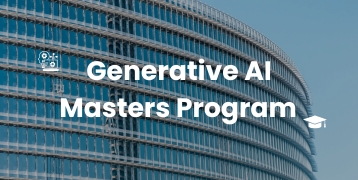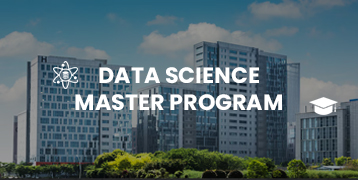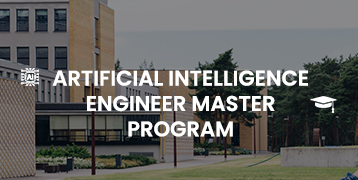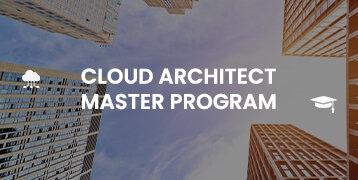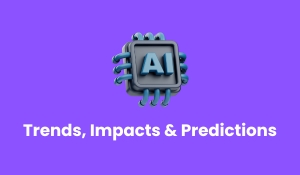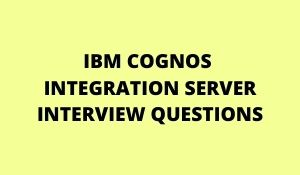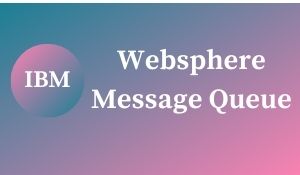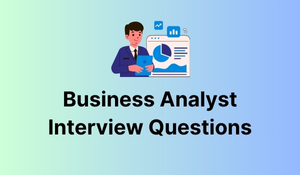
A Business Analyst (BA) is an expert who links a company’s requirements to the technology capable of meeting those requirements. They gather feedback, create analyses, review processes, and seek methods to improve efficiency. They act as the intermediary between everyone involved, making sure projects fit the organization’s objectives and bring value. Essential duties involve collecting inputs, producing reports, examining operations, engaging with stakeholders, assessing solutions, managing changes, and constantly seeking ways to improve. BAs need to have the ability to analyze data, communicate effectively, solve problems, understand technical concepts, and connect with people. Their role is crucial in companies as they ensure projects are in line with the company’s goals, improve the decision-making process with insights from data, and make it easier to involve stakeholders. Their efforts can result in greater efficiency, better handling of risks, and a more competitive stance in the marketplace.
In the current business environment, Business Analysts are vital in connecting the requirements of a business with suitable technological answers. They pinpoint, examine, and record the specific needs of a business, making certain that projects are in line with the goals of the organization. This overview delves into their role, duties, abilities, and approaches.
Here we can GoLogica provide some Business Analyst Interview Questions. Here’s how you can apply common Business Analyst questions in real-life scenarios: We hope These questions will be used in Your Interviews.
Business Analyst Interview Questions and Answers -2024
What is a Business Analyst?
A specialist in process analysis, business needs identification, and solution provision for increased efficiency and effectiveness is known as a business analyst.
What are the primary tasks performed by a business analyst?
- Stakeholder management
- Process analysis
- Documentation
- Requirements collecting, and solution evaluation are important duties.
What significance does gathering needs have?
- Ensuring that the project satisfies the needs and expectations of stakeholders
- Collecting requirements lowers the chance of the project’s failure.
What is a Business Requirements Document (BRD)?
- A business requirements document, or BRD
- Serves as a guide for those involved in the project
- Outlining the main business goals and objectives of the project.
What is the difference between a BRD and an FRD?
A business requirements document outlines the high-level business needs. A functional requirements document breaks down the specific system functionality and requirements into details for the interested audience-the technical.
What is a stakeholder?
While a functional requirements document offers technical individuals specific system descriptions, a business requirements document explains the basic demands of the company.
How do you identify stakeholders?
Stakeholder identification is a crucial business analysis process that enhances project management, decision-making, and success chances using techniques like the Stakeholder Matrix and RACI Matrix.
What is a use case?
A use case is a detailed description of the interaction of a system with users, designed for software development and product design as a way to define requirements, communicate with stakeholders, guide development, and test the system.
What is a user story?
A user story is an abstract description from the requester’s point of view, very often used in agile development methodologies for planning and communication purposes concerning the needs of a user.
Can you explain what process modeling is?
Process modeling, a visual representation technique, helps stakeholders understand a process’s sequence, decision points, and relationships, enhancing communication and streamlining through tools like flowcharts, BPDs, Activity Diagrams, and Workflow Diagrams.
Techniques and Methodologies:
What is Agile methodology?
Agile refers to a method of software development in which it always goes about development, customer collaboration, and continuous improvement toward faster delivery, enhanced quality, and customer satisfaction.
What is the Waterfall model?
The waterfall model is a sequential approach in software development characterized by a definite number of phases, simplicity, and suitability for small projects with well-defined requirements and limited scope.
What is a feasibility study?
A feasibility study assesses a project’s viability, identifies challenges, enhances decision-making, and secures funding to ensure successful implementation, and completion within budget and timeframe.
What is gap analysis?
Gap analysis compares system state and desired state, identifying areas for improvement in resource allocation, decision-making, performance, business strategy, process improvement, and technology implementation.
What is SWOT analysis?
It is a strategic planning tool used for assessing the business that explores the context where the strengths, weaknesses, opportunities, and threats are identified.
What is data modeling?
Data modeling is the actual process required in information system development for conceptual data representations, efficient database storage, organization, and decision-making support.
Can you describe a fishbone diagram?
A fishbone diagram is a visual tool for determining the root causes of problems based on the five M’s as the major categories. It provides a clear representation, collaboration, and a structured problem-solving approach.
What are important performance metrics?
Key Performance Metrics (KPMs) act as tools for tracking a business’s advancement in areas such as strategic direction, decision-making, and expansion.
What is user acceptance testing?
- UAT stands for user acceptance testing
- Business analysts
- Testers check the functionality
- Usability, and defects of the system.
What is prototyping?
In prototyping, a preliminary version of a product or system is built, testing its function and usability to know how well it has been designed, thereby getting early feedback and faster development.
Communication and Stakeholder Management:
How do you manage stakeholder expectations?
Stakeholder management is crucial for project success, communication, decision-making, risk identification, and adjustment. Strategies include stakeholder mapping, impact prioritization, flexibility, and trust building.
Why is communication important for business analysis?
Effective communication is crucial in business analysis, involving understanding project goals, requirements, and solutions, stakeholder management, decision-making, and change management.
How would you manage stakeholder conflict?
Managing conflict between stakeholders in project management requires identifying root causes, encouraging open discussion, power, recording agreements, and neutral communication.
What are the techniques you use to collect requirements?
Project success depends on effective requirement-gathering techniques like:
- Structured interviews
- Surveys
- Workshops
- Focus groups
- Document analysis
- Observation
- Prototyping
- User stories
- Mind maps, and use cases.
What techniques do you use to gather requirements?
- Meaningfully communicate
- Actively listen
- Make decisions
- Build values
- Use technology.
How do you ensure all stakeholders are engaged?
Some of how stakeholder engagement might be ensured are through communication, active listening, decision-making, value-building, and power balance through regular updates, networking, and technology use.
How Could you rank your requirements?
- MoSCoW Method
- Value Prioritization Matrix
- Weighted Scoring Model
- Decision Matrix Analysis
- Business Impact Analysis is being used by project management to rank requirements.
What is stakeholder analysis?
Stakeholder analysis is a crucial process in project management that identifies, evaluates, and ranks stakeholders to understand their interests, expectations, and impact on project success.
How will you develop rapport with stakeholders?
Establishing a rapport involves active listening, effective communication, respect, trust, shared goals, personal connections, and cultural sensitivity, laying the groundwork for successful collaboration and project execution.
What is a communications plan?
A communications plan is a strategic document outlining information sharing, management, stakeholder analysis, objectives, key messages, channels, roles, crisis communication, and project success evaluation.
How do you keep the requirements documentation clear?
- Clear, concise requirements documentation is crucial for project success
- Utilizing strategies like plain language
- SMART goals, examples, consistent formatting
- MoSCoW prioritization, regular reviews, and version control.
- Problem-solving and Critical Thinking
What activities do you undertake to solve a problem in a business?
The process involves problem identification, gathering information, applying the Five Whys Analysis, evaluating solutions, selecting risks, planning, allocating resources, monitoring progress, and evaluating results.
What’s your approach to making choices?
- Making choices involves a methodical and progressive process.
- Setting objectives
- Generating alternatives
- Evaluation
- Implementation, and evaluation of the outcome
What is root cause analysis?
- Root Cause Investigation (RCI) is a methodical approach for
- Determining and solving the fundamental reasons behind issues.
- Thereby preventing recurring issues
- Enhancing efficiency
- Cost reduction, and decision-making.
How will you establish the validity of your findings?
The validation of research findings through triangulation, peer reviews, replication, and ethical considerations ensures accuracy, reliability, and trustworthiness, making them credible and reliable.
How do you generate ideas for solutions?
Brainstorming technique that utilizes methods like mind mapping, scamper, NGT, Delphi, and role-playing to foster non-linear thinking, consensus building, creativity, empathy, and understanding.
How do you handle ambiguous requirements?
- To address ambiguous requirements effectively
- Use active listening, communication
- Workshops, prototyping, and clear documentation.
What does critical thinking mean for the business analyst?
- Critical thinking is a crucial skill for business analysts
- Enabling them to question assumptions
- Analyze data objectively
- Solve complex problems
- Identify opportunities, mitigate risks, and communicate effectively.
How do you ensure that your solution will work?
The evaluation process should prioritize feasibility, risk, stakeholder, pilot testing, scalability, and sustainability to assess the technical, economic, legal, operational, and environmental impacts of the solution.
What Is Risk Analysis?
Risk Analysis is a structured method for identifying potential threats to a project or business, enhancing decision-making, reducing uncertainty, and increasing project success chances.
How do you Approach Continuous Improvement?
Continuous improvement is a strategic approach utilizing Lean principles, data-driven decision-making, empowerment, customer feedback, and strategic emphases like Kaizen, Six Sigma, DMAIC, and Kaizen Events.
Technical Skills and Tools:
What data analysis tools are you comfortable with?
This individual is an experienced data analyst with deep knowledge in statistical software, visualization, machine learning, and big data analytics, and would be a great resource for concepts and code examples.
What is SQL, and how is SQL used in business analysis?
SQL is the computer language applied to data extraction, analysis, reporting, and integration in business analysis. It is particularly important in complex data landscapes, avoiding duplicate entries.
What are modeling tools in business analysis used for?
Tools like BPMN, UML, ER diagrams, data flow diagrams, decision trees, and simulation aid in model building, providing a visual representation of complex systems for better decision-making.
What is JIRA, and how do you work on it?
JIRA is a software development project management tool that improves visibility, productivity, and decision-making by offering customizable workflows, reporting, analytics, and integration with other tools.
What are the Key features of Microsoft Visio?
Microsoft Visio is diagramming software that comprises:
- Customizable templates
- Smart shapes
- Real-time collaboration and export options in PDF
- Image, and Visio XML formats.
What is BPMN?
BPMN is a standardized graphical notation that enhances understanding, communication, efficiency, decision-making, and automation of business processes by providing a visual language for activities, decisions, and data flow.
How do you keep your data of analysis quality?
Proper analysis requires strategies like validation, profiling, standardization, governance, metrics, tools, and collaboration to remove duplications and errors while maintaining consistent formats.
What is wireframing?
Wireframing is the design technique that develops a simple user interface with simple shapes and provides iterative feedback to provide early feedback, reduce costs, make usability better, and speed development.
What is a decision tree?
Decision trees are graphical representations utilized in data mining and machine learning for predictive modeling, classification, decision support, and data mining, but they can become overfitting and sensitive to small changes.
Behavioral and Situational Questions:
Describe the most demanding business analyst project you have ever worked on.
The business analyst project successfully implemented a CRM system for a large retail chain, improving customer insights, efficiency, decision-making, and satisfaction.
How do you deal with tight deadlines?
Efficacious task prioritization, effective information processing, and adaptability of the individual help to achieve deadlines without any interruptions or time to sleep.
Describe an occasion where you resolved a team conflict.
The team conflict resolution plan involves gathering information, finding common ground, encouraging open discussions, elaborating on compromises, focusing on solutions, promoting active listening, and completing the project.
How do you stay organized at work?
Good data structures, clean coding, updates, task prioritization, and frequent check-ins are all strategies important in staying organized, tracking data, avoiding errors, and moving forward to goals.
What do you do if you think you are wrong?
Acknowledge and apologize for any incorrect information. Use statistics to clarify facts, assess perception errors, and provide guidance to clear up ambiguity, as continuous learning requires accuracy of information.
How do you ensure stakeholder input is implemented?
The team conflict resolution plan involves gathering information, finding common ground, encouraging open discussions, elaborating on compromises, focusing on solutions, promoting active listening, and completing the project.
Can you talk about a highly successful project you have led?
The project successfully identified customer segments, optimized marketing campaigns, and predicted future trends, despite challenges such as data quality and privacy, resulting in increased conversion rates at reduced costs.
How do you respond to a scope creep of a project?
According to the author, changes in project objectives, timeline budget, and resources. Implications, plan revision. Management of stakeholder expectations, prioritizing as perceived to maximize value for stakeholders.
Describe an experience where you had to influence a decision.
Analysis of data in terms of advantages and disadvantages. Reporting those findings to your team. Providing insights to inform decisions and with a final decision made by your team.
How would you handle stress and pressure?
This system helps in efficient task prioritization, information processing, and flexibility, enabling individuals to handle large workloads, analyze tasks efficiently, and continuously improve efficiency.
Industry Knowledge:
What trends do you see impacting business analysis today?
Business analysis is undergoing rapid changes in areas like data-driven decision-making, agile integration, customer experience, artificial intelligence, cloud-based solutions, ethical considerations, and data privacy.
How do you update yourself on Business Analysis best practices?
That means to be updated about things, one needs to be up-to-date by continuous learning, or through events, publications, certifications, professional communities, trends, and any form of analysis.
What do you mean by business process improvement?
- Business Process Improvement means the systematic identification
- Analysis, and improvement of existing business processes to achieve
- Organizational goals using tools like Value Stream Mapping
- Root Cause Analysis
- Six Sigma, and BPM.
Can you define change management?
Change management is a structured process of identifying needs, planning, communicating, implementing, and evaluating impact involving stakeholders, clear communication, and support.
How would you measure the impact of new regulations on a project?
Compliance with new regulations necessitates a systematic approach, including identifying regulations, analyzing requirements, assessing project impact, creating a compliance plan, and maintaining stakeholder liaison.
What role does data analytics play in business analysis?
Data analytics is a vital aspect of business analysis, patterns, and relationships, thereby enhancing decision-making, operational efficiency, client satisfaction, and competitiveness.
How do you ensure that compliance in your projects is maintained?
The process involves thorough regulatory research, stakeholder compliance matrix creation, risk assessment, training, record maintenance, frequent audits, and continuous monitoring to improve compliance and foster a culture of improvement.
Can you share your experience with CRM systems?
The enterprise software application enhances customer satisfaction, sales, and decision-making by managing customer interactions and data, available in on-premise, cloud-based, and open-source options.
Describe user experience (UX) for a business analyst.
Business analysts aim to improve user experience (UX) for customer satisfaction, loyalty, and business success by understanding user needs, creating user flows, conducting usability tests, and improving designs.
What are some of the general business challenges a firm faces today?
Business challenges encompass economic uncertainty, global competition, high expenses, technological changes, cyber-attack threats, customer expectations, company regulations, human resources, and environmental issues.
How do you want to collect requirements?
The process involves extensive interviews, surveys, document reviews, workshops, brainstorming sessions, and prototyping to gather data on stakeholders’ needs, expectations, and pain points to achieve organizational goals.
Miscellaneous Questions:
What is your preferred method for gathering requirements?
To achieve technical and business value, objectives, stakeholder involvement, feasibility, prototyping, iteration, and monitoring are essential for delivering technically sound solutions.
How do you balance technical and business needs?
Business analysis involves balancing technical and business needs through objectives, stakeholder involvement, feasibility, prototyping, iteration, and monitoring to ensure technically sound solutions deliver business value.
Which software development methodologies are you aware of?
Software development methodologies like Agile, Scrum, Kanban, DevOps, Extreme Programming, and Feature-Driven Development each have unique strengths and weaknesses.
What is the process to choose a vendor for a project?
Selecting a vendor for a project involves defining requirements, preparing a Vendor Request for Proposal, identifying potential vendors, evaluating proposals, shortlisting, due diligence, negotiation, and communication.
What is the function of documentation in your work?
Documentation is vital in language model usage as it enhances accuracy, consistency, and transparency by providing knowledge, training data, quality control, and transparency.
What does success look like for a project?
- Staying within budget and on schedule
- The outcomes are of good quality
- Satisfying stakeholders
- Learning experiences for team members, and adding value to the organization.
Which of the following metrics do you believe are most often used to measure project success?
Key project success metrics include achieving scope, managing time and budget, ensuring stakeholder satisfaction, maximizing return on investment, learning from mistakes, team performance, risk management, and assessing impact.
How do you run your projects respecting the risks involved?
Project risk management involves identifying, evaluating, and mitigating potential risks to a project’s success using methods like SWOT, historical data analysis, risk matrix, reviews, and continuous evaluation.
How do you build a positive team culture?
A healthy team culture fosters cooperation, success, and work by enhancing communication, shared goals, trust, respect, recognition, rewards, learning, work-life balance, inclusiveness, and feedback.
Conclusion:
A Business Analyst (BA) is an essential communication link between stakeholders and technical teams, ensuring that business needs are understood and translated into actionable solutions. They optimize processes, reduce costs, improve efficiencies, and enhance overall performance. BAs identify challenges, bridge communication gaps, gather requirements, provide actionable insights, and manage risks. They ensure practical, efficient, and aligned strategies with the company’s vision for growth, helping organizations adapt to changes and thrive in a competitive landscape.





